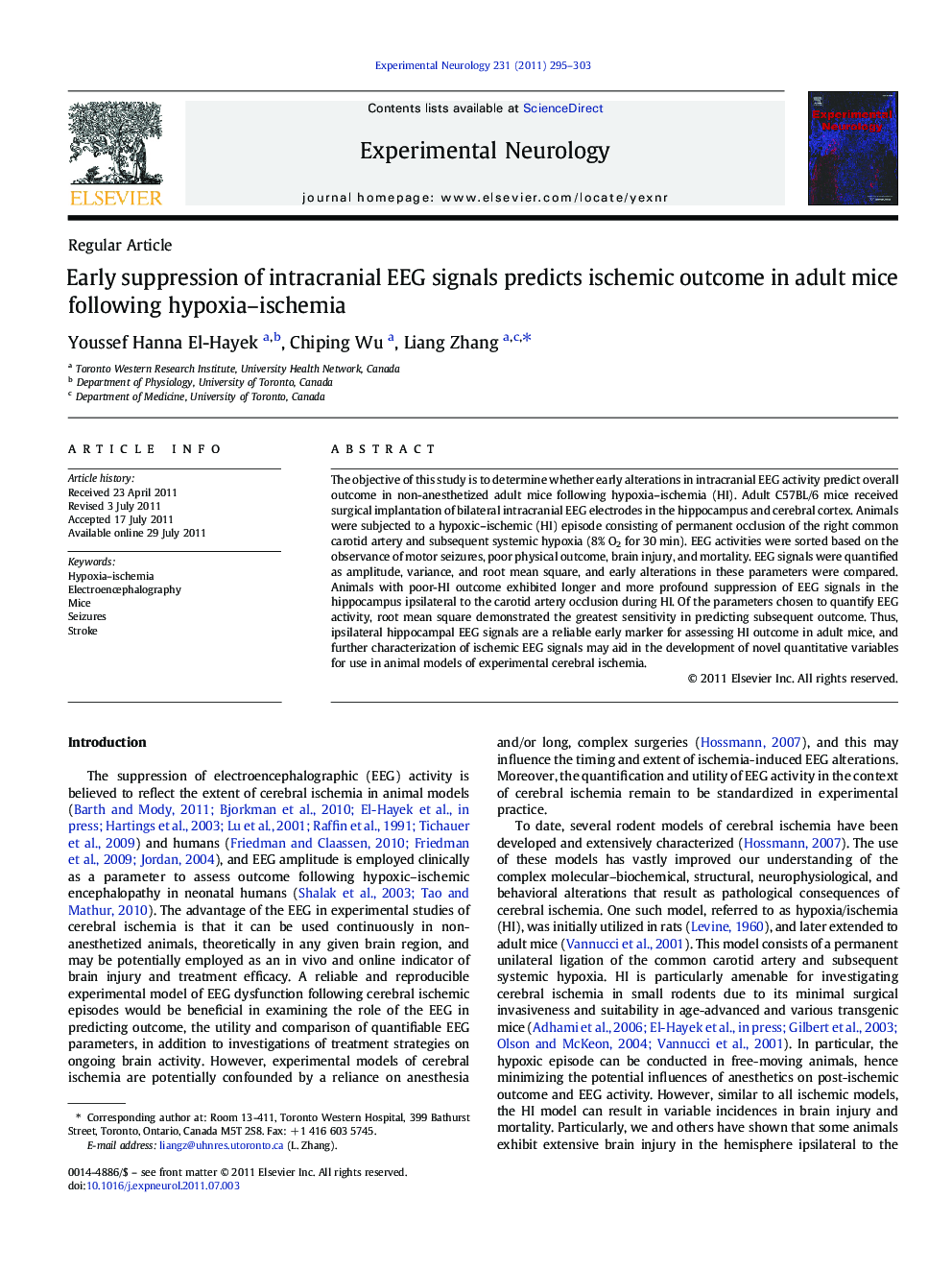| Article ID | Journal | Published Year | Pages | File Type |
|---|---|---|---|---|
| 3055694 | Experimental Neurology | 2011 | 9 Pages |
The objective of this study is to determine whether early alterations in intracranial EEG activity predict overall outcome in non-anesthetized adult mice following hypoxia–ischemia (HI). Adult C57BL/6 mice received surgical implantation of bilateral intracranial EEG electrodes in the hippocampus and cerebral cortex. Animals were subjected to a hypoxic–ischemic (HI) episode consisting of permanent occlusion of the right common carotid artery and subsequent systemic hypoxia (8% O2 for 30 min). EEG activities were sorted based on the observance of motor seizures, poor physical outcome, brain injury, and mortality. EEG signals were quantified as amplitude, variance, and root mean square, and early alterations in these parameters were compared. Animals with poor-HI outcome exhibited longer and more profound suppression of EEG signals in the hippocampus ipsilateral to the carotid artery occlusion during HI. Of the parameters chosen to quantify EEG activity, root mean square demonstrated the greatest sensitivity in predicting subsequent outcome. Thus, ipsilateral hippocampal EEG signals are a reliable early marker for assessing HI outcome in adult mice, and further characterization of ischemic EEG signals may aid in the development of novel quantitative variables for use in animal models of experimental cerebral ischemia.
► The effects of unilateral cerebral ischemia on ipsilateral hippocampal EEG activities were examined in adult mice. ► The amplitude, variance, and root mean square of ipsilateral EEG signals were significantly reduced by ischemia. ► EEG suppression during and following ischemia was correlated to histological brain injury and poor outcome. ► EEG root mean square demonstrated the greatest sensitivity in predicting post-ischemic outcome. ► Our experimental approach may lead to the development of novel quantitative EEG parameters.
